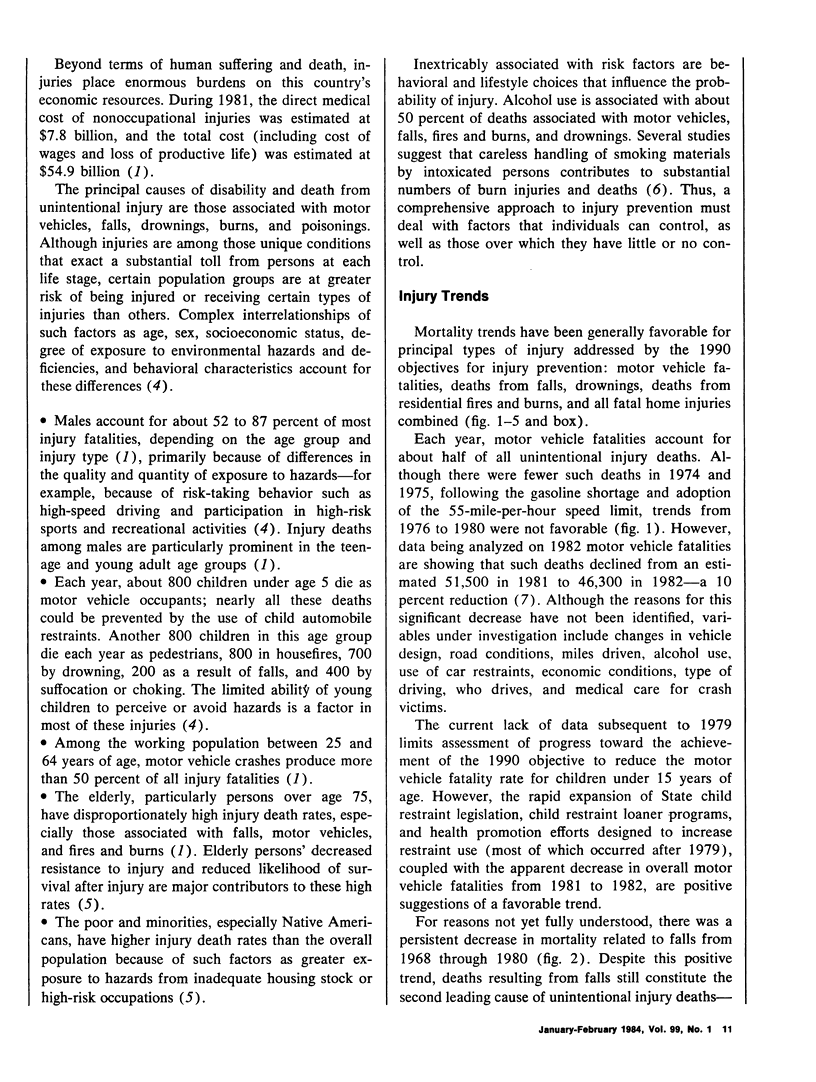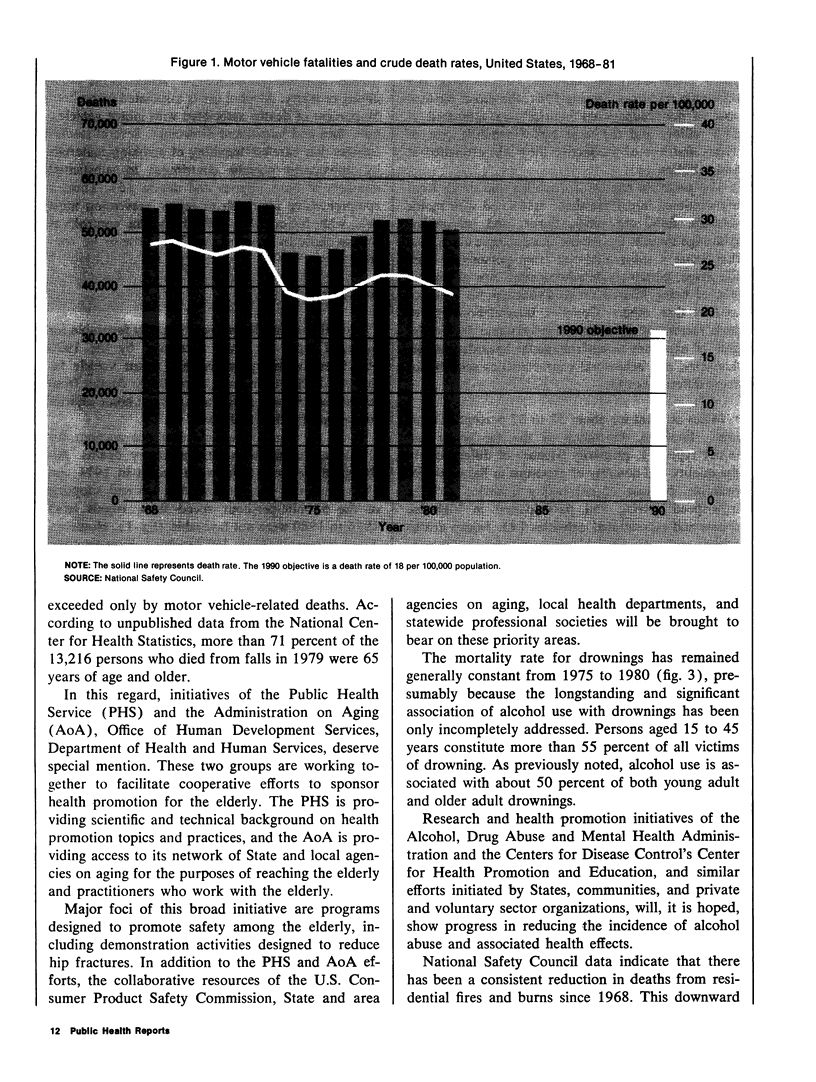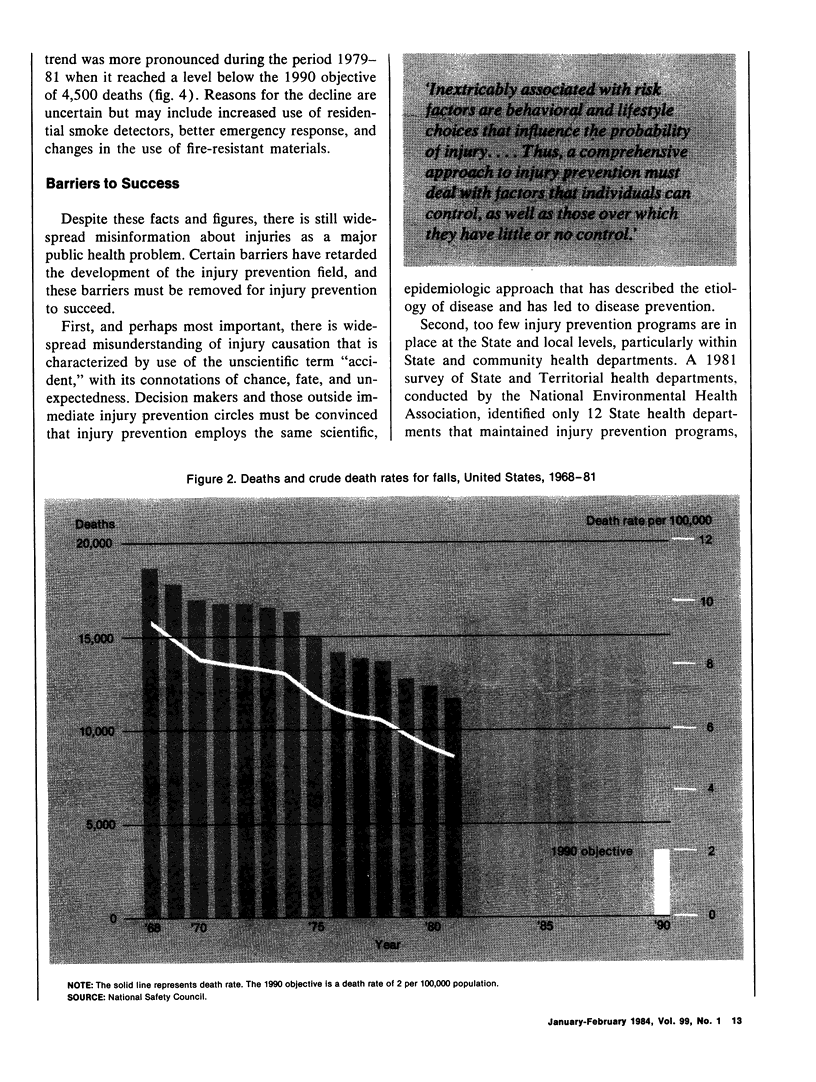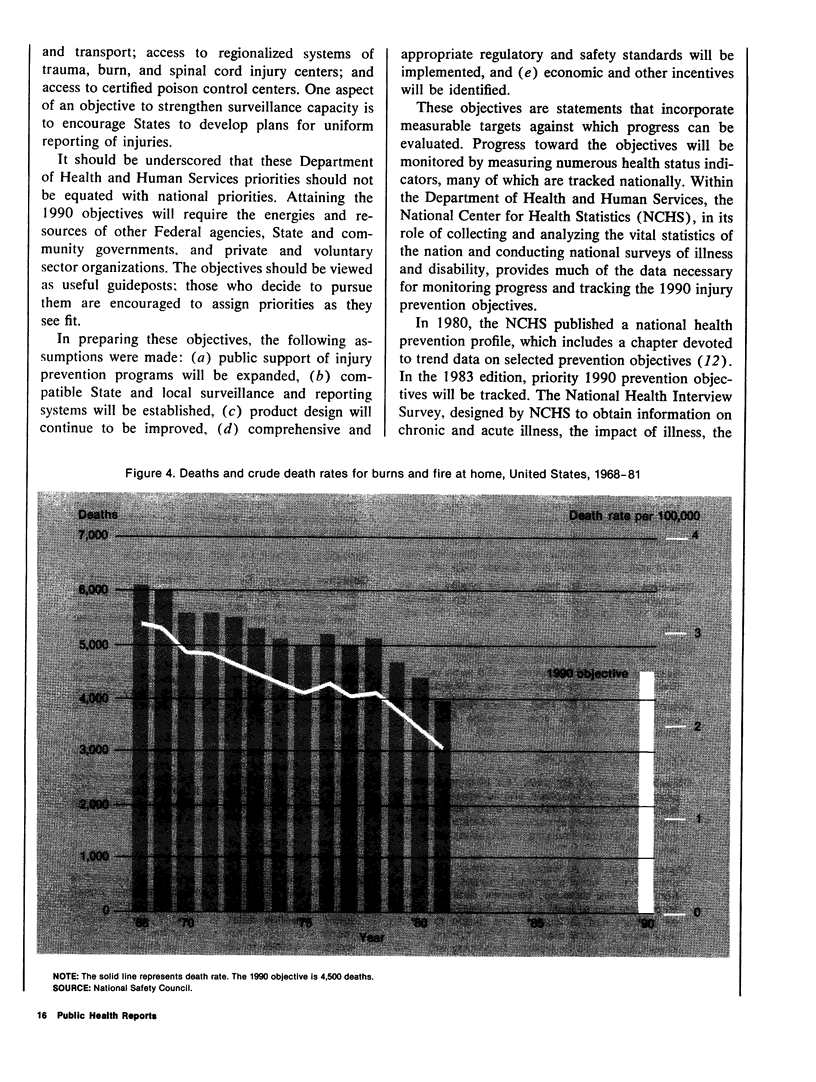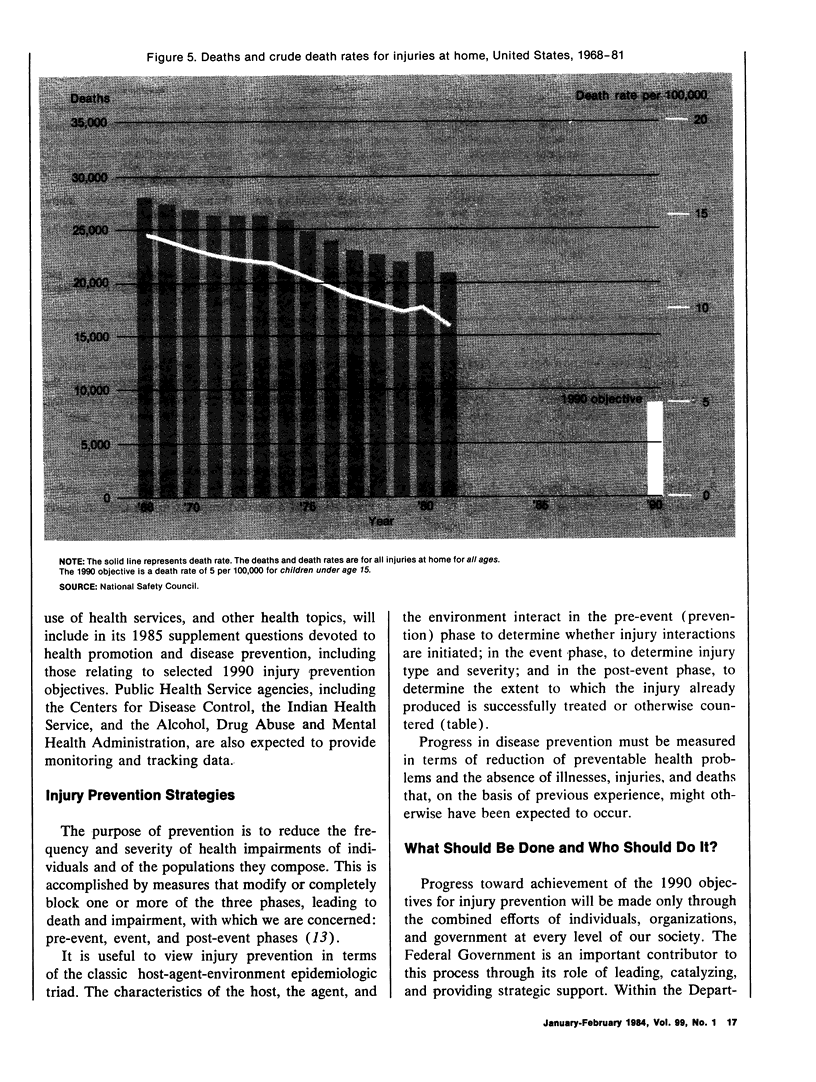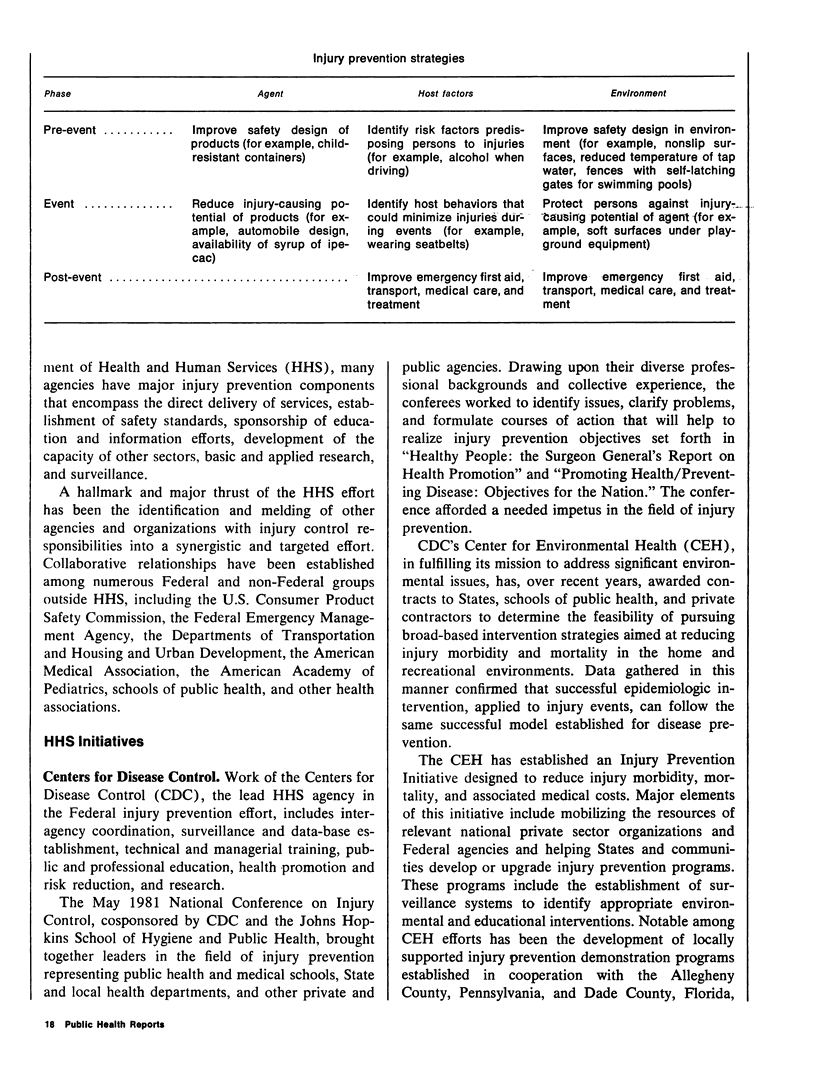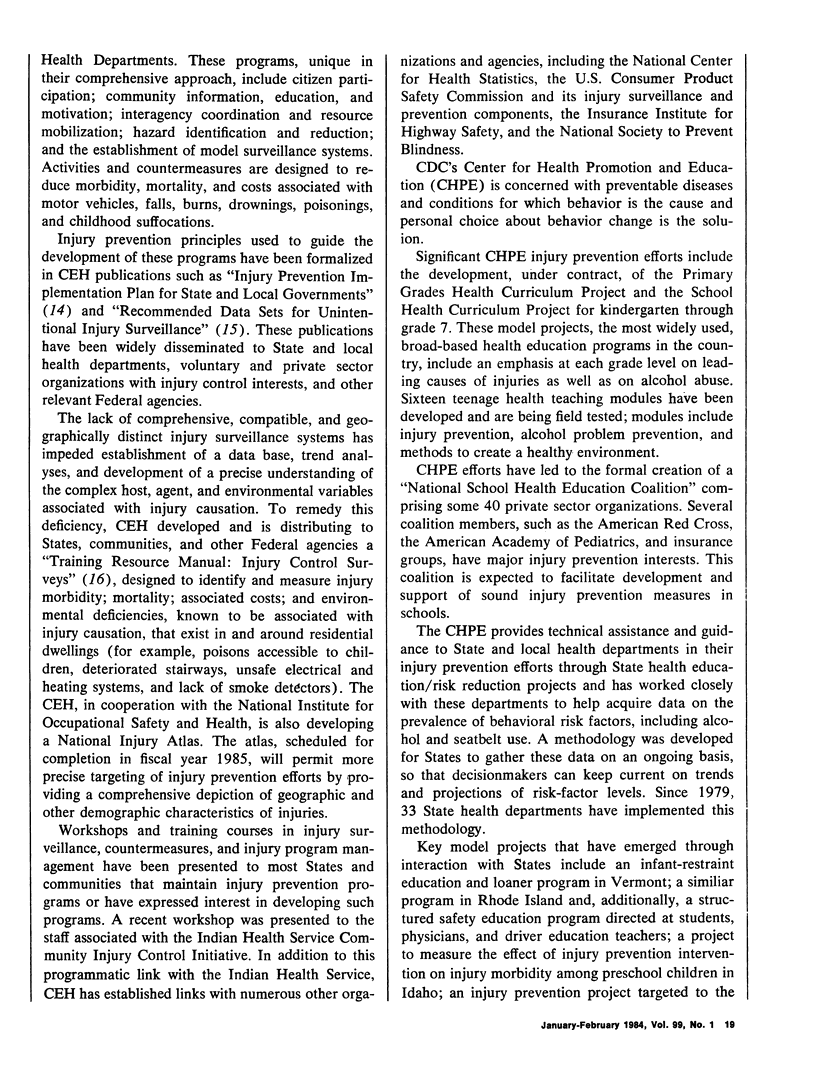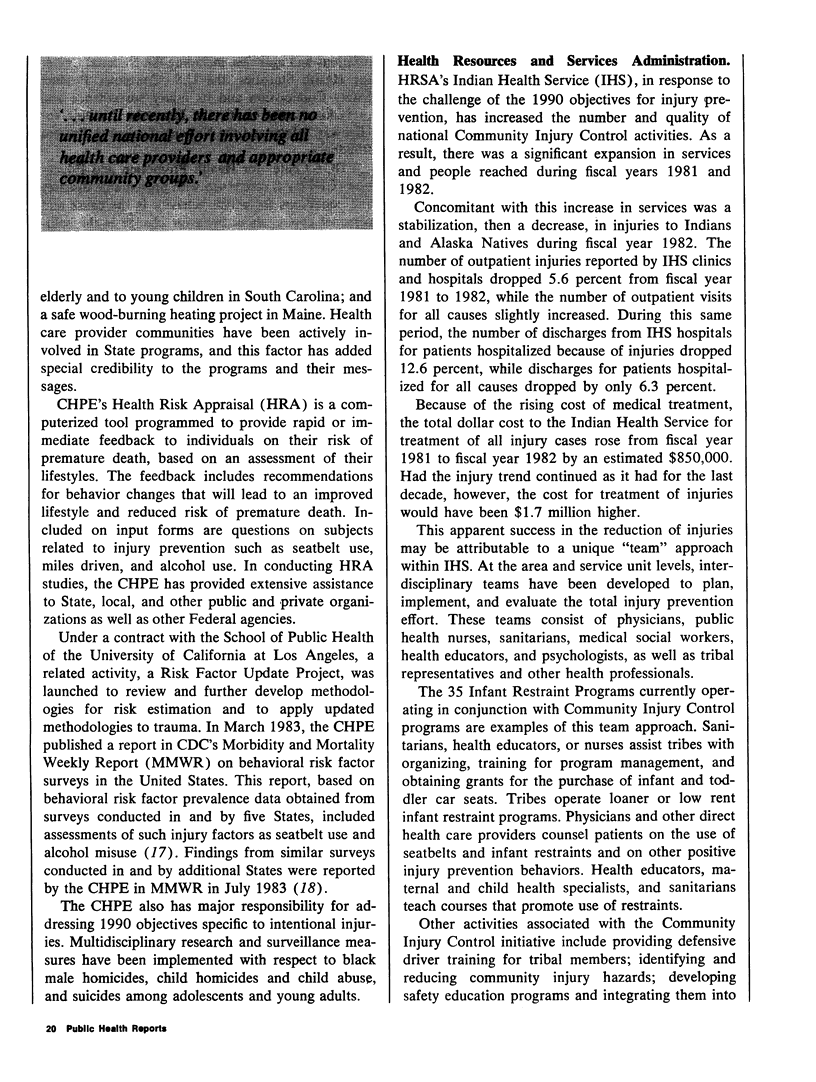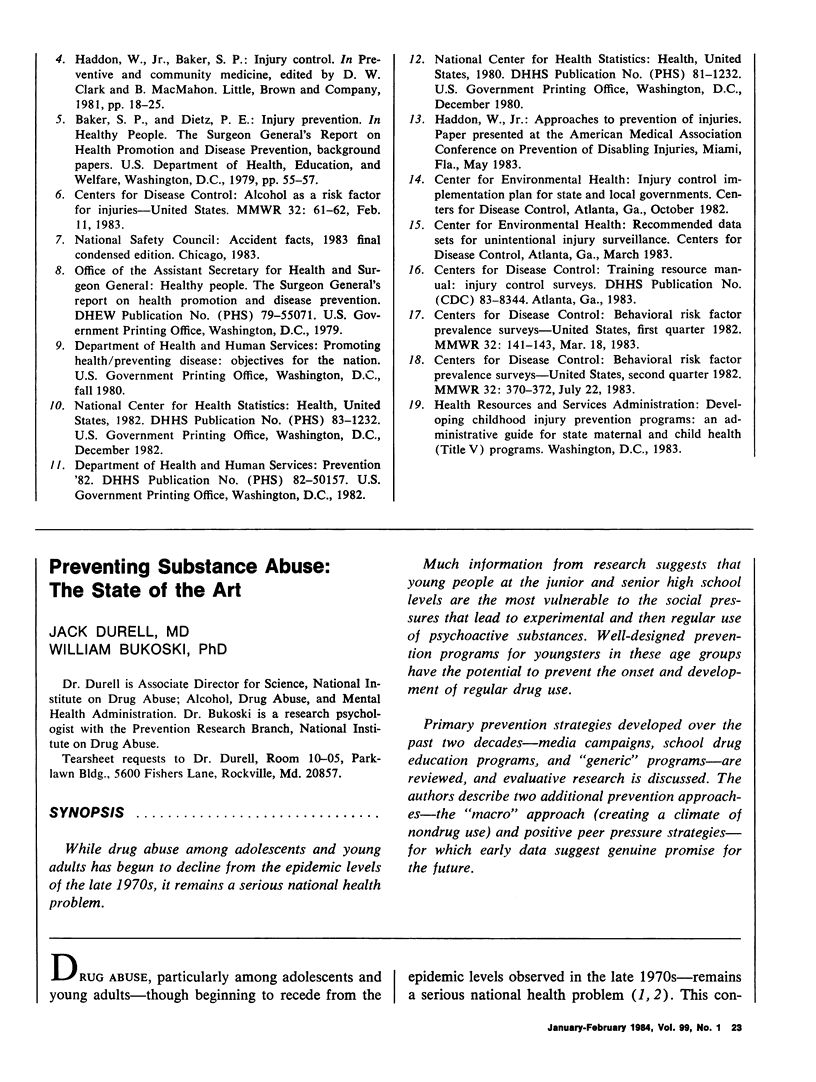Abstract
Unintentional injuries are the principal cause of preventable early death. Beyond terms of human suffering and death, injuries place enormous burdens on this country's economic and health care resources. Demographic, sociological, environmental, and behavioral factors that influence our society contribute to the complexity and scope of the injury problem. Progress in injury prevention will be achieved only through the combined efforts of individuals, organizations, and government at every level of our society. The Federal Government is an important contributor to this process through its role of leading, catalyzing, and providing strategic support. Within the Department of Health and Human Services, numerous agencies have major injury prevention components with a broad range of responsibilities, including the direct delivery of services, establishment of safety standards, sponsorship of education and information efforts, building of the capacity of other sectors, basic and applied research, and surveillance. The Centers for Disease Control, as the lead agency, assists State and local health departments in their injury prevention efforts and coordinates activities undertaken jointly by Federal agencies, State and local governments, and private-sector organizations. To meet the 1990 Objectives for the Nation with respect to injury prevention, both the public health and private-sector providers must recognize the injury problem of the 1980s. Without the support and involvement of the public health and provider communities and of the private sector, injuries and their costs will continue at their present alarming rates. The opportunity is great for promoting health, preventing injuries, and reducing associated costs to society. Making the best of this opportunity is our challenge during this decade.
Full text
PDF
